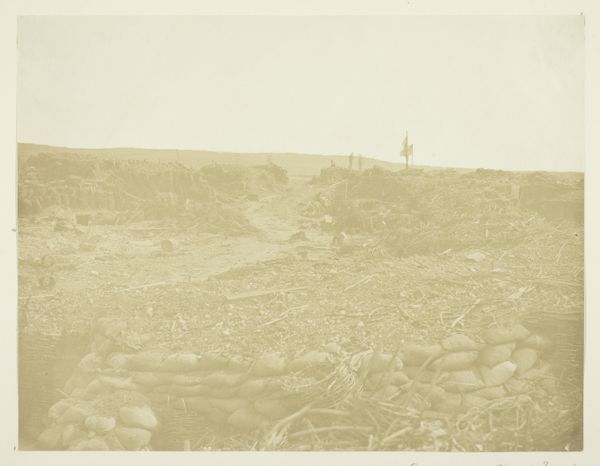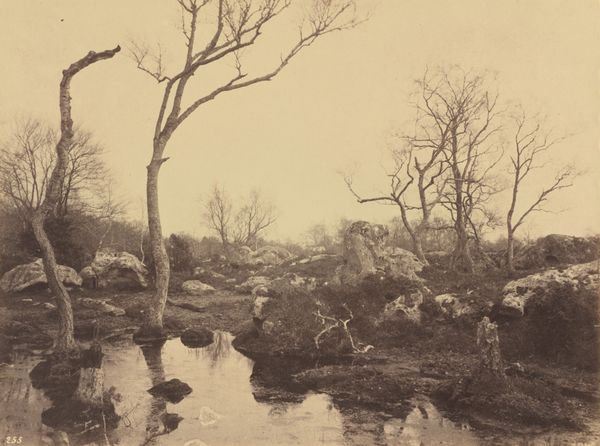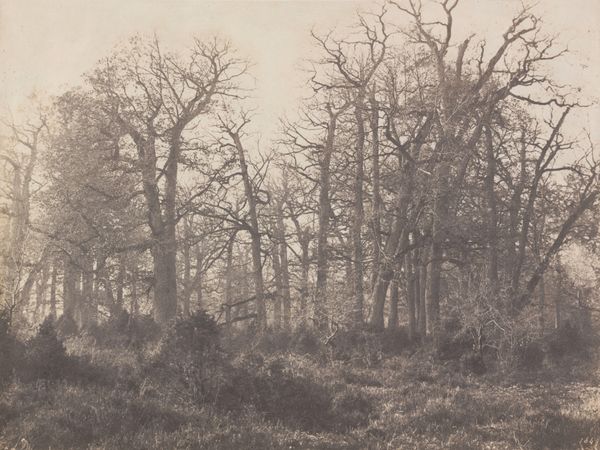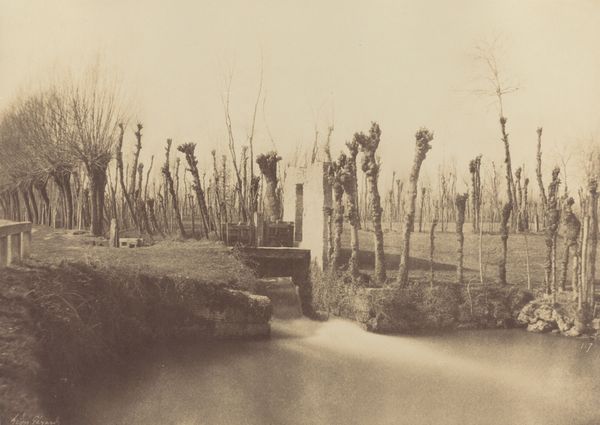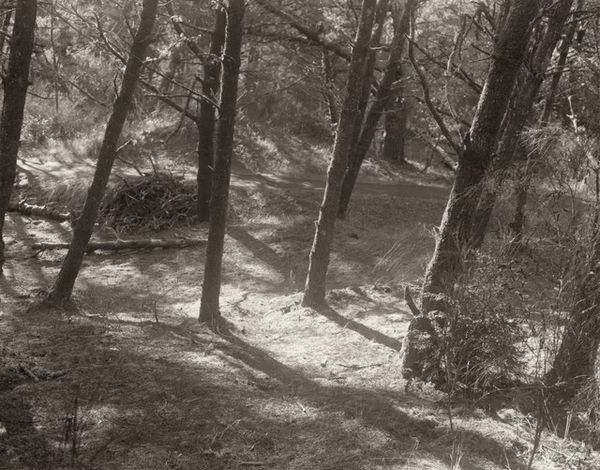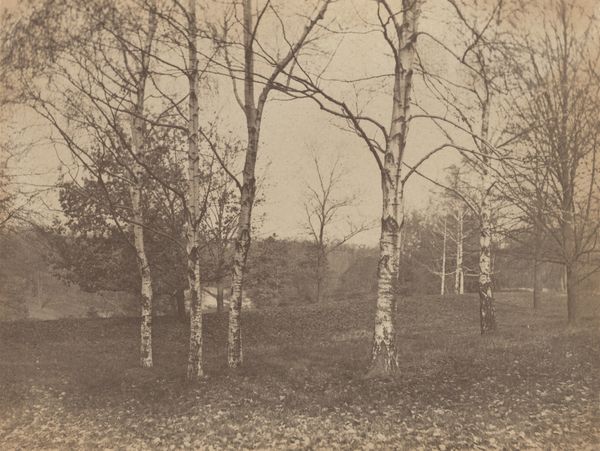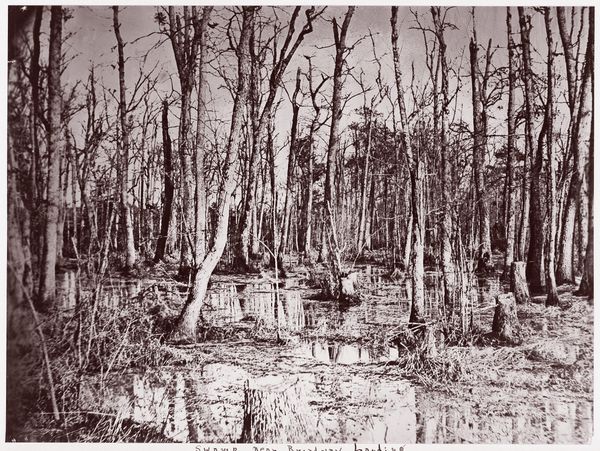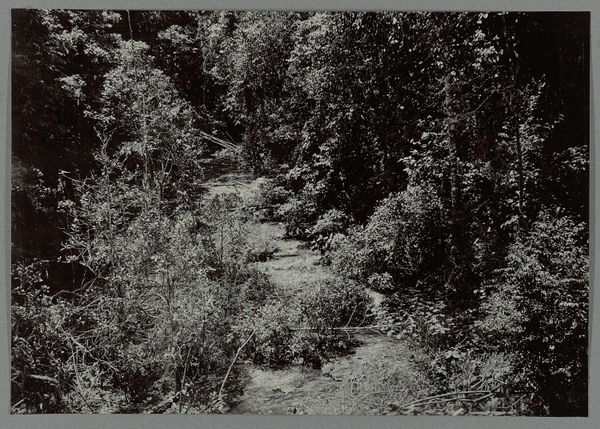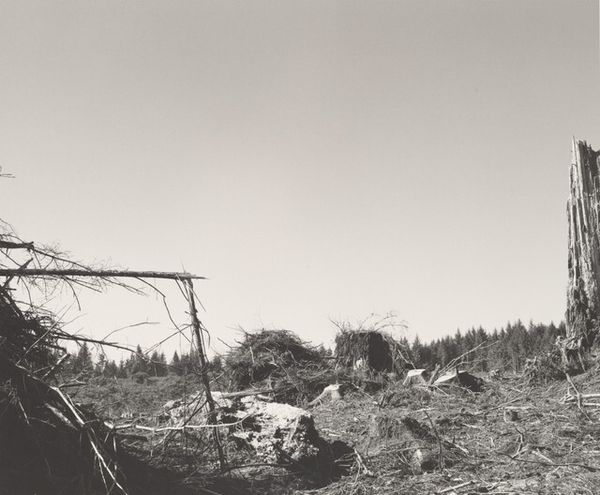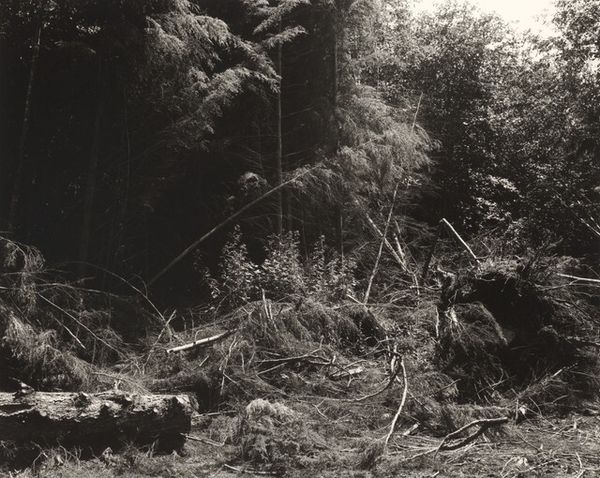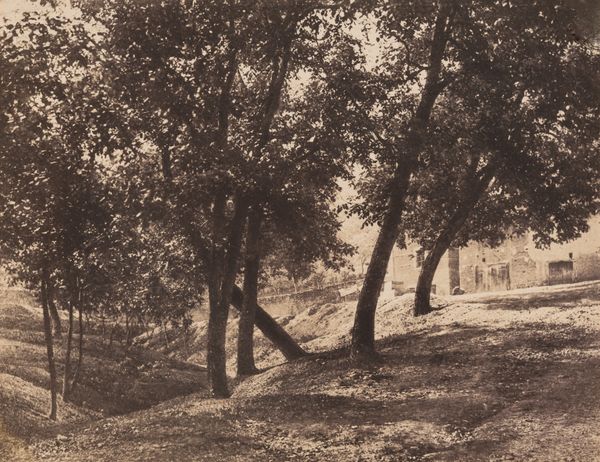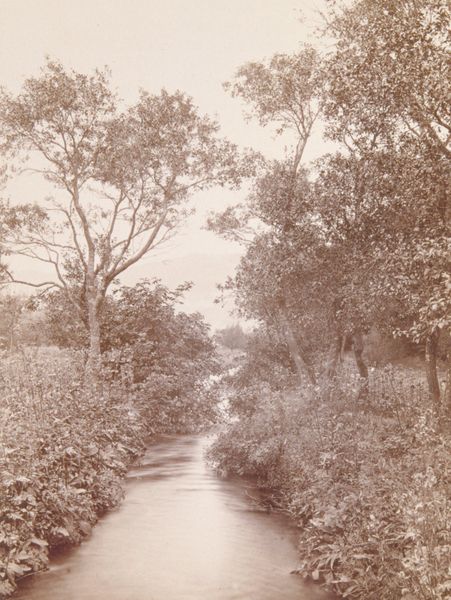
Dimensions: image/sheet: 11.9 × 16.9 cm (4 11/16 × 6 5/8 in.) mount (1): 13 × 17.6 cm (5 1/8 × 6 15/16 in.) mount (2): 34.4 × 26.1 cm (13 9/16 × 10 1/4 in.)
Copyright: National Gallery of Art: CC0 1.0
Editor: So, this is Robert S. Redfield’s “Spring Landscape,” from the 1890s, a gelatin-silver print done en plein-air. It’s such a serene, almost dreamlike scene with the fog and soft light. What do you see in this piece beyond just a pretty landscape? Curator: It’s a captivating image, isn’t it? Looking at this landscape, I think about how land itself becomes a canvas for cultural projection. The very act of framing and capturing this “natural” scene is a cultural act. Redfield isn’t just recording what’s there, he's curating a particular vision of nature. Editor: A vision for whom, exactly? Curator: Think about the social and economic context of the late 19th century. Rapid industrialization, urbanization… There was a growing nostalgia for a simpler, rural past. Images like these, particularly in a new, accessible medium like photography, could reinforce idealized narratives about nature as a refuge. How do you think class and race factor into this “refuge?” Who had access to these idyllic spaces, and who didn’t? Editor: I hadn't considered that aspect of it. I guess I just saw a peaceful landscape. Curator: It is that, but consider also what it might mask. This era witnessed aggressive land exploitation and the displacement of indigenous populations. Naturalism and Impressionism in landscape photography might inadvertently obscure these harsh realities by focusing on surface appearances and idealized beauty. The selective view can erase difficult truths. Editor: So, even seemingly innocent art can be loaded with societal implications? Curator: Precisely! By questioning whose story is being told—and whose is being omitted—we can begin to critically assess the social and historical forces at play even within a landscape. Editor: I never thought a peaceful landscape could be so complex. This makes me want to look at art with new eyes and ask more questions about its context. Curator: Excellent! That's exactly the point – art invites dialogue, questioning, and a deeper understanding of the world around us.
Comments
No comments
Be the first to comment and join the conversation on the ultimate creative platform.
